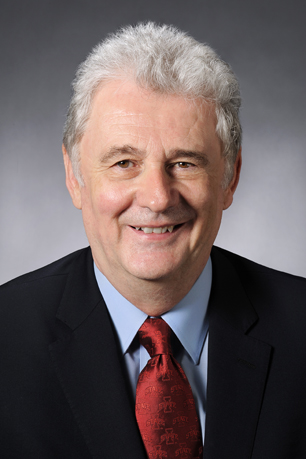IEEE Sensor's Talk by Prof. Leonard J. Bond

A Technical Talk will be given on the Title "A novel cryogenic acoustic microscope to evaluate electronic components" by Prof. Leonard Bond.
Abstract:
Cold electronics is a key technology in many areas of science and technology including space exploration programs and particle physics. A major particle physics experiment with a very large number of analog and digital electronics signal processing channels to be operated at cryogenic temperatures is the next-generation neutrino experiment, the Deep Underground Neutrino Experiment (DUNE). DUNE will uses liquid Argon at ~ 87 K as a target material for neutrinos and as a medium to track charged particles resulting from interactions in the detector volume. The DUNE electronics will consist of about 24,000 custom-designed ASIC (Application Specific Integrated Circuits) chips based on low-power 180 nm-CMOS technology. A major risk for this technology is failures in the electronics components which will be immersed in liquid argon for 20-30 years, without opportunity for access or replacement. One challenge is that the ASICs which are being developed can be tested (electrically) at room temperature, and yet still fail when cooled to cryogenic temperatures. There is therefore a need to provide a capability that can assess chips at cryogenic temperatures, including the ability to identify anomalies with the potential to develop to cause defects and subsequent failure, due to thermal cycling to cryogenic temperatures. Various inspection technologies, including both x-ray and ultrasound, are being considered to ensure chip QA/QC.
One activity to improve chip reliability is the design, use, and data analysis for a novel low-cost cryogenic acoustic microscope (CryoSAM) which has been developed and used to evaluate reliability issues of ASICs that may arise from thermal stress, packaging, and manufacturing-related defects. Cryogenic acoustic microscopy in itself is not new: a GHz frequency unit was reported by a Stanford University group in the 1980s. The current CryoSAM is intended to be an engineering capability that can operate to frequencies of about 50 MHz. The talk introduce DUNE and will then report on the design and testing of the CryoSAM, the differences in response seen due to using a liquid gas as the complaint, including differences in resolution and sensitivity between water and the liquid gas, the challenges faced in the development and use of the instrument, including thermal issues and management of bubbles. It will also present a sophisticated correlation analysis technique, applied to the acoustic microscope images and digitized 4-D (xyz and time) data records, that is capable of finding even subtle changes that occur inside the ASICs, including during those which develop during multiple thermo-cycles. The cryogenic acoustic microscopy and this powerful data analysis technique is demonstrating that it will allow screening of DUNE ASIC and potentially significantly reduce the risk of sensor failure during DUNE operation.
Date and Time
Location
Hosts
Registration
- Date: 08 Nov 2023
- Time: 01:45 AM UTC to 03:00 AM UTC
-
 Add Event to Calendar
Add Event to Calendar
- WSU Tri-Cities
- Richland , Washington
- United States 99354
- Building: BSEL
- Room Number: 103
- Click here for Map
- Contact Event Hosts
-
Organized by IEEE Sensors Council - Richland Chapter Section
Speakers
 Leonard Bond of Iowa State University
Leonard Bond of Iowa State University
Biography:
Professor Leonard J. Bond received his Ph.D. in Physics from The City University, London in 1978. After a long career in industry, national laboratories, and academia he is now a Professor Emeritus (from 2022) at Iowa State University and an Honorary Professor, at Beijing University of Technology (BJUT). From 2012-2018, he was the Director of the Centre for NDE and then Coordinator for the Minor in NDE at Iowa State University. He has throughout his career worked on aspects of both high and low-power ultrasonics, particularly focused on measurements in harsh and novel environments for nuclear, defense, and process industries problems. He continues activities with research into various aspects of nondestructive evaluation, nonlinear ultrasonics, acoustic microscopy, and advanced x-ray imaging. Professor Bond is the author of more than 350 papers in journals and conference proceedings. He has been the author or co-author for 18 book chapters, working party reports, and editor for sixteen books and proceedings. He is co-author of the book “Ultrasonics,” Ensminger and Bond, and the 4th Edition is in press and will be published late 2023. He has 10 patents. He started his academic career as a faculty member, at University College London, becoming a Reader in Ultrasonics. Mid-career he took a sabbatical at the National Institute of Standards and Technology (NIST) and the University of Colorado Boulder, which became a move to the USA. His subsequent activities included positions with the University of Denver, Denver Research Institute, Pacific Northwest National Laboratory (PNNL), where he was a Laboratory Fellow, and the Idaho National Laboratory (INL), where he was the founding Director of CASE (Center for Advanced Energy Studies). He has held positions with various technical societies including as Region 6 Director and Director of IEEE. He is a Fellow American Association for the Advancement of Science (AAAS) and the UK Institute of Physics.
Email:
Address:Iowa State University , , Ames, Iowa, United States, 50011
Agenda
Pizza 5:45 PM and Presentation 6:00 PM
Please join us for free pizza and an exciting seminar.
No IEEE membership is required.
Please register for logistic purposes.
